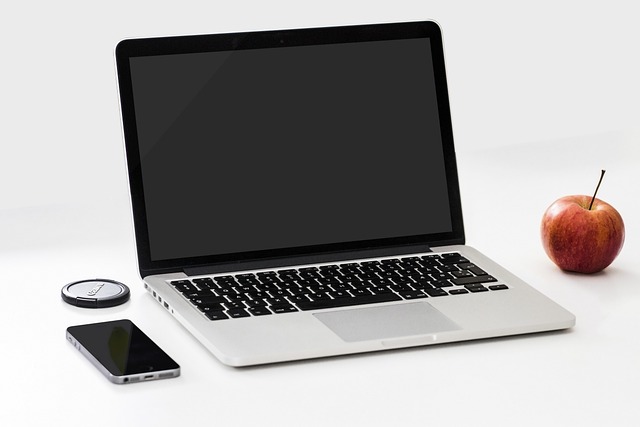How to Fix Common Windows & Mac Errors Quickly

Computers are powerful tools, but they can sometimes encounter errors that disrupt productivity and cause frustration. Whether you’re using a Windows PC or a Mac, encountering issues like slow performance, software crashes, or hardware malfunctions is inevitable. Fortunately, many common errors can be resolved quickly with the right troubleshooting techniques. In this article, we’ll explore how to identify and fix some of the most frequent problems on both Windows and macOS systems.
1. Introduction
No matter how reliable your computer is, technical glitches can occur. These issues can range from minor annoyances to major system failures. Understanding how to troubleshoot and resolve these problems can save time and prevent costly repairs. This guide will walk you through fixing common errors on both Windows and Mac operating systems, providing step-by-step solutions to get your machine back on track.
2. Common Windows Errors and Solutions
What It Is:
The Blue Screen of Death (BSOD) is a critical error screen displayed when Windows encounters a serious issue that it cannot recover from. The screen typically shows an error code and forces the system to restart.
How to Fix:
- Check Error Code: Note the error code displayed on the BSOD.
- Update Drivers: Outdated or corrupted drivers often cause BSODs. Go to Device Manager , locate problematic devices, and update their drivers.
- Run Memory Diagnostic Tool: Press
Win + R, typemdsched.exe, and press Enter. This tool checks for RAM issues. - Scan for Disk Errors: Open Command Prompt as Administrator and run
chkdsk /f /rto check and repair disk errors. - Uninstall Recent Software: If the issue started after installing new software, uninstall it via Control Panel > Programs and Features .
What It Is:
A sluggish computer can be caused by various factors, including insufficient memory, too many startup programs, or malware infections.
How to Fix:
- Disable Startup Programs: Press
Ctrl + Shift + Escto open Task Manager, go to the Startup tab, and disable unnecessary programs. - Free Up Disk Space: Use Disk Cleanup (
Win + S > Disk Cleanup) to remove temporary files and free up space. - Upgrade Hardware: Consider upgrading your RAM or switching to an SSD for faster performance.
- Scan for Malware: Run a full system scan using Windows Defender or a trusted third-party antivirus program.
- Adjust Visual Effects: Go to System Properties > Advanced > Performance Settings and select “Adjust for best performance.”
What It Is:
Dynamic Link Library (DLL) files contain code and data used by multiple programs. Missing or corrupted DLL files can lead to application crashes.
How to Fix:
- Reinstall the Affected Program: Uninstall and reinstall the program showing the error.
- Use System File Checker (SFC): Open Command Prompt as Administrator and run
sfc /scannowto repair missing or corrupted system files. - Download Missing DLL Files Carefully: Only download DLL files from reputable sources to avoid malware risks.
- Perform a System Restore: If the problem persists, restore your system to a previous state using System Restore .
What It Is:
Failed updates can leave your system vulnerable and outdated.
How to Fix:
- Restart Your Computer: Sometimes, a simple reboot resolves the issue.
- Run Windows Update Troubleshooter: Go to Settings > Update & Security > Troubleshoot > Additional Troubleshooters > Windows Update .
- Clear Update Cache: Stop the Windows Update service, delete files in
C:\Windows\SoftwareDistribution, and restart the service. - Manually Install Updates: Download the latest updates from Microsoft’s website if automatic updates fail.
3. Common Mac Errors and Solutions
What It Is:
If your Mac fails to power on, it could be due to hardware issues, drained battery, or software corruption.
How to Fix:
- Check Power Source: Ensure the charger is connected properly and try a different outlet.
- Reset SMC (System Management Controller): For Intel-based Macs, shut down, press
Shift + Control + Optionalong with the power button, then release all keys and turn on the Mac. - Boot into Safe Mode: Hold
Shiftwhile powering on to boot into Safe Mode and diagnose issues. - Contact Apple Support: If none of the above works, seek professional assistance.
What It Is:
The spinning beach ball indicates that macOS is unresponsive or struggling to complete a task.
How to Fix:
- Force Quit Applications: Press
Command + Option + Escto force quit unresponsive apps. - Close Background Processes: Open Activity Monitor (
Command + Space > Activity Monitor) and end high-CPU processes. - Free Up Storage: Delete unnecessary files or move them to external storage.
- Repair Disk Permissions: Use Disk Utility (
Applications > Utilities > Disk Utility) to repair disk permissions.
What It Is:
A kernel panic occurs when macOS detects a fatal error and shuts down to prevent further damage.
How to Fix:
- Safe Boot: Restart your Mac and hold
Shiftuntil the login screen appears. - Check Hardware Connections: Disconnect peripherals and ensure internal components (e.g., RAM) are seated correctly.
- Reinstall macOS: If the issue persists, erase your drive and reinstall macOS using Recovery Mode (
Command + Rduring startup). - Visit Apple Store: Persistent kernel panics may indicate hardware failure; consult Apple technicians.
What It Is:
Updating macOS can sometimes result in failed installations or compatibility problems.
How to Fix:
- Free Up Disk Space: Ensure you have at least 20GB of free space before updating.
- Check Internet Connection: A stable Wi-Fi connection is essential for downloading updates.
- Retry Installation: Restart your Mac and attempt the update again.
- Use Recovery Mode: If the update fails, boot into Recovery Mode (
Command + R) and reinstall macOS.
4. General Troubleshooting Tips for Both Platforms
Regardless of whether you’re using Windows or Mac, here are universal tips to address common issues:
- Restart Your Computer: Many problems can be resolved with a simple restart.
- Keep Software Updated: Regularly update your OS and applications to patch bugs and vulnerabilities.
- Backup Your Data: Use cloud services or external drives to safeguard important files.
- Monitor Temperatures: Overheating can cause instability; clean dust from vents and use cooling pads if necessary.
- Consult Official Forums: Visit Microsoft or Apple support forums for community-driven solutions.
5. Preventive Measures to Avoid Future Errors
Prevention is always better than cure. Here are steps to minimize the likelihood of encountering errors:
- Install Antivirus Software: Protect against malware and viruses.
- Regular Maintenance: Clean temporary files, defragment hard drives (for Windows), and optimize storage.
- Avoid Pirated Software: Unauthorized downloads increase the risk of malicious software.
- Educate Yourself: Learn basic troubleshooting skills to handle minor issues independently.




